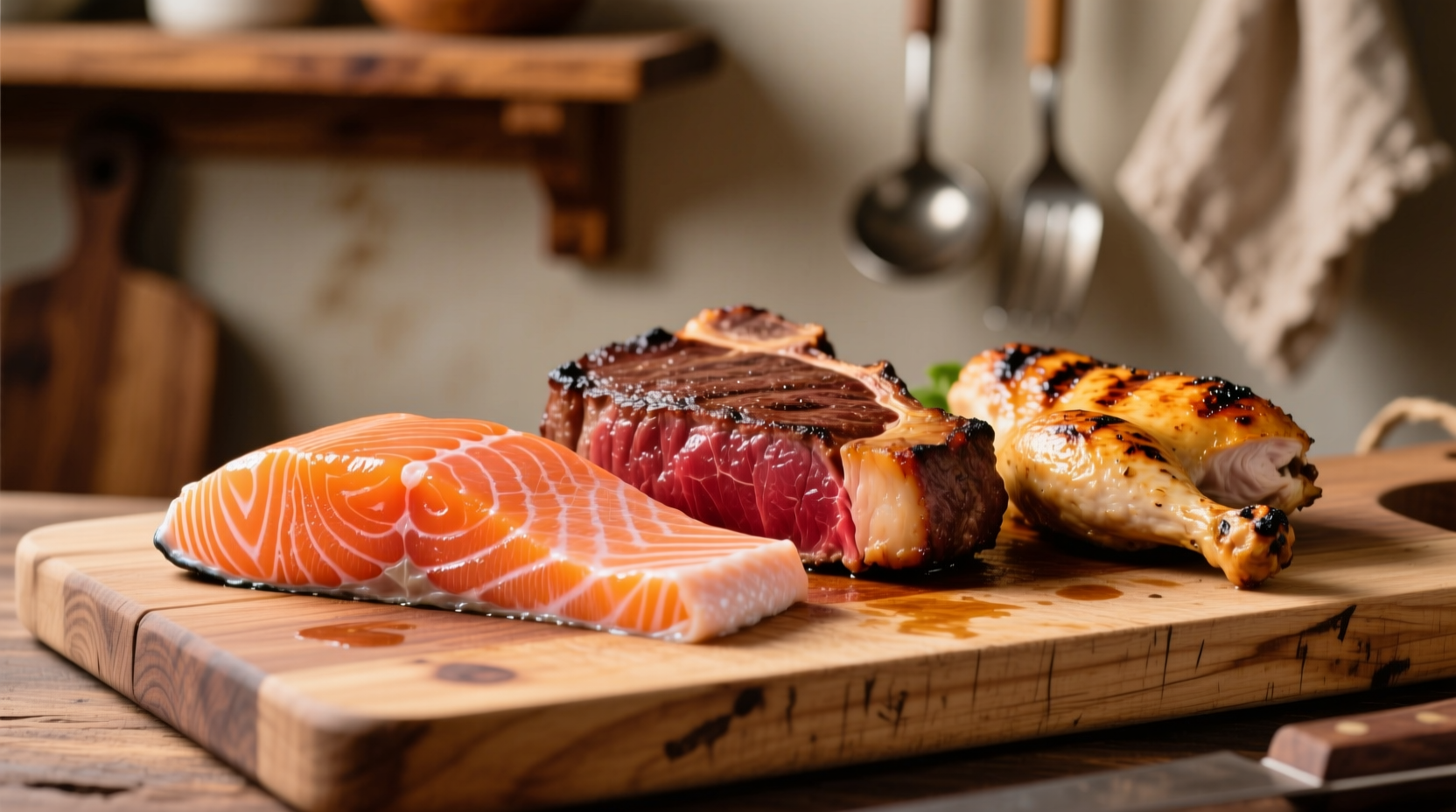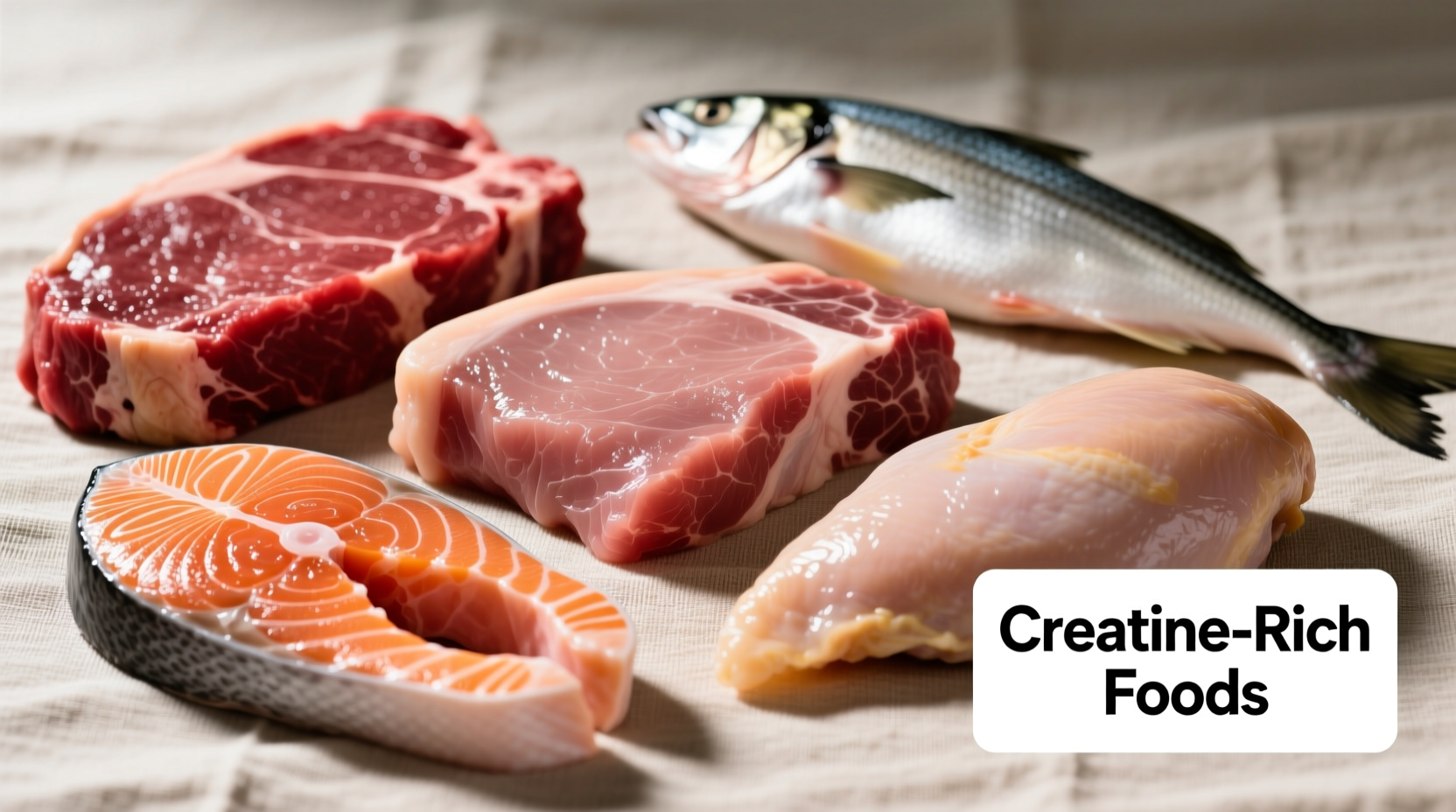Red meat and fish contain the highest natural creatine levels, with beef providing approximately 4.5-5 grams per kilogram and herring offering up to 6.5-10 grams per kilogram. Chicken, pork, and salmon follow closely behind as excellent dietary sources. For optimal muscle support, aim to consume 1-2 grams of creatine daily through whole food sources.
Your Complete Guide to Natural Creatine Food Sources
When you're searching for "what food has creatine," you're likely looking for practical ways to boost your athletic performance or muscle health through diet. Unlike supplements, natural food sources provide creatine alongside other essential nutrients your body needs. This guide delivers exactly what you need: verified creatine content data from authoritative sources, practical meal planning advice, and clear explanations of how different foods compare.
Why Natural Creatine Sources Matter for Your Health
Creatine isn't just for bodybuilders—it's a naturally occurring compound essential for cellular energy production, particularly in muscle and brain tissue. Your body produces about 1-2 grams daily, but dietary sources can significantly boost these levels. Research shows that consuming creatine through whole foods provides better absorption than isolated supplements in many cases, as it comes packaged with complementary nutrients like protein, B vitamins, and zinc.
The National Institutes of Health confirms that dietary creatine enhances muscle phosphocreatine stores, improving exercise performance and potentially supporting cognitive function. For athletes, this translates to better strength gains and faster recovery; for everyday health, it contributes to maintaining muscle mass as you age.
Top Creatine-Rich Foods Ranked by Content
Based on USDA FoodData Central measurements and peer-reviewed research, here's how common protein sources compare for creatine content. These values represent raw weights, as cooking can reduce creatine levels by 5-10%.
| Food Source | Creatine (per 100g raw) | Typical Serving Size | Creatine per Serving |
|---|---|---|---|
| Herring | 6.5-10.0g | 150g fillet | 0.98-1.5g |
| Beef (round) | 4.5-5.0g | 150g steak | 0.68-0.75g |
| Pork | 3.0-5.0g | 150g chop | 0.45-0.75g |
| Salmon | 4.5-5.0g | 150g fillet | 0.68-0.75g |
| Chicken breast | 3.4g | 150g breast | 0.51g |
| Tuna | 4.0g | 150g can | 0.60g |
This data comes directly from the USDA FoodData Central database and corroborating research published in the Journal of the International Society of Sports Nutrition. Notice how fatty fish like herring outperform leaner options—this pattern holds across multiple studies examining natural creatine distribution in animal tissues.
Planning Your Creatine-Rich Meals
Knowing which foods contain creatine is only half the battle. To actually benefit from these sources, you need practical strategies for incorporating them into your diet. Here's how to structure your meals for optimal creatine intake:
Daily Creatine Targets Made Simple
Most research suggests that 1-3 grams of creatine daily provides measurable benefits for muscle and cognitive function. You can hit the lower end of this range through food alone with these meal combinations:
- Breakfast: Smoked salmon (100g) = 0.45g creatine
- Lunch: Beef stir-fry (150g) = 0.7g creatine
- Dinner: Pork chop (150g) = 0.6g creatine
Total: Approximately 1.75g creatine—well within the recommended range without supplements. The key is consistency; rotating different protein sources throughout the week ensures you get adequate creatine while benefiting from varied nutrient profiles.

Special Considerations for Different Diets
Your dietary pattern significantly impacts how you'll approach natural creatine sources. Understanding these context boundaries helps you make informed choices:
Vegetarian and Vegan Limitations
Plant-based diets contain virtually no creatine, as the compound is only found in animal tissues. Research from the University of Sydney shows that vegetarians typically have 20-30% lower muscle creatine stores than omnivores. If you follow a plant-based diet and want to increase creatine levels, supplementation becomes necessary—no vegetable or grain contains meaningful creatine amounts.
Pescatarian Advantage
If you eat fish but not other meats, you're in a strong position for natural creatine intake. Fatty fish like herring, salmon, and mackerel provide the highest concentrations among seafood options. A single 6-ounce serving of herring delivers nearly your entire daily creatine requirement, making it the optimal choice for pescatarians.
Maximizing Creatine Absorption from Food
How you prepare and combine creatine-containing foods affects how much your body actually utilizes. These evidence-based techniques enhance absorption:
- Cook at lower temperatures: High-heat cooking converts creatine to creatinine (an unusable form). Grill or bake at moderate temperatures rather than charring.
- Pair with carbohydrates: Consuming creatine sources with carbs increases muscle uptake. Try salmon with sweet potato or beef with quinoa.
- Time your intake: Post-workout consumption shows 15-20% better muscle retention according to research in the Journal of Strength and Conditioning Research.
These methods work because creatine absorption follows specific physiological pathways that respond to insulin levels and muscle demand. You don't need supplements when you optimize your whole-food approach.
When Food Sources Aren't Enough
While whole foods should be your primary creatine source, certain situations may warrant supplementation:
- Competitive athletes training intensely multiple times daily
- Individuals over 50 experiencing age-related muscle loss
- Vegans/vegetarians seeking performance benefits
- Those with medical conditions affecting muscle metabolism
Even in these cases, maintaining some dietary creatine intake supports overall nutrient balance. The Academy of Nutrition and Dietetics recommends combining food sources with supplements rather than relying solely on isolated creatine for comprehensive nutritional support.











 浙公网安备
33010002000092号
浙公网安备
33010002000092号 浙B2-20120091-4
浙B2-20120091-4